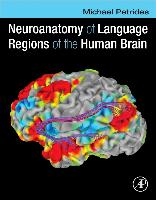Anatomical research has begun to show neural pathways linking language comprehension regions to speech regions and others linking parietal areas involved in writing/reading with those essential for motor control and language production. As a result, investigators with diverse backgrounds in language research now have an increasing need for a well-illustrated book focused on the anatomy of language, and Neuroanatomy of Language Regions of the Human Brain is just that. Here is a richly illustrated, practical reference for any scientist interested in the study of brain and language, providing insight into the pathways for certain aspects of language processing and covering both classic work and modern discoveries.

